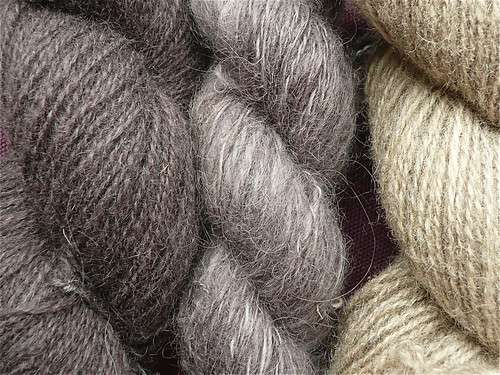Objective Analysis of Natural Dyes
Although natural dyes have been in use since at least the Neolithic period, objective quantification of their color properties and performance within particular fabrics was not possible until recently. Today’s sophisticated spectrophotometric instruments allow researchers to analyze the impact of natural dyes on various fabrics to help textile manufacturers select the right dyes for their materials and purposes. For example, a 2009 study published in Materials examined the behavior of natural dyes sourced from peony, pomegranate, clove, coptis chinensis, and gallnut extracts in cotton, silk, and wool fabrics. CIE L*,a,*b* values determined via spectral analysis indicated that the final color result were “significantly dependent on the structure of the colorant and the kinds of fabrics.”2 More specifically, comparison of color values revealed that “wool showed the highest a* and b* values for all colorants, followed by silk and cotton, indicating that the increase of redness and yellowness was in the order of wool > silk > cotton.” Another group of researchers used colorimetric analysis to examine natural sources of yellow pigmentation and found that pomegranate peel dye produces lighter and truer yellow hues than weld in nylon fabrics.3 As research on natural dyes continues to progress in response to growing interest in environmentally-friendly textile processing, spectrophotometric analysis will allow for an expanded recognition of the color possibilities presented by dye/fabric interactions and aid in dye selection.
Evaluating the Impact of Mordants and Other Treatments
However, the dyes themselves are not the only factor to consider. Although some natural dyes such as indigo and lichens can be used alone, mordant treatment is often necessary to bind plant dyes to textile fibers and encourage color fastness. Because natural dyes tend to have significantly lower levels of color fastness than synthetic dyes, the mordanting process is considered a critical aspect to producing textiles that can be used commercially to compete with artificial pigments. However, mordants can change the physical and chemical properties of fabrics and interact with dyes in ways that affect color behavior. In many cases, this effect is for the better; as pointed out in the International Journal of Chemical, Molecular, Nuclear, Materials and Metallurgical Engineering, “Mordanting generally improve[s] dye performance and help[s] the dyer to achieve a broad spectrum of colors on a wide range of natural as well as synthetic fibers with expanded share ranges and better fastness properties.”4
The spectrum of color possibilities can be further expanded by subsequent chemical treatments such liquid ammonia applications that interact with dyes and mordants to create unique color variations. A study published in Coloration Technology found that mordanted wools dyed with a range of naturally-sourced red, brown, and yellow pigments, including madder, walnut, red onion, pomegranate, and weld, displayed lower *L values after ammonia treatment and that the decrease in *L values was proportionate to the potency of the ammonia solution.5 Other significant color value changes were also observed, including an increase of *C values in wools dyed with weld and white onion, a decrease in *C values in wools dyed with red onion skills and cochineal, and a decrease in a*, b*, and C* values in wools dyed with madder and walnut husks. Understanding the impact of mordants and other chemical treatments on naturally dyed fabrics can help you exploit the potential of these pigmentation processes to create the exact shade you are seeking.




